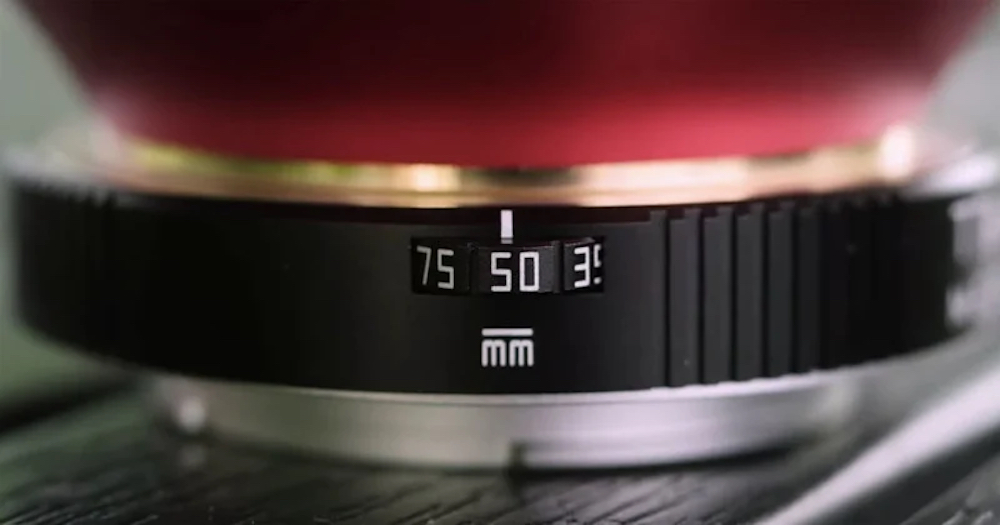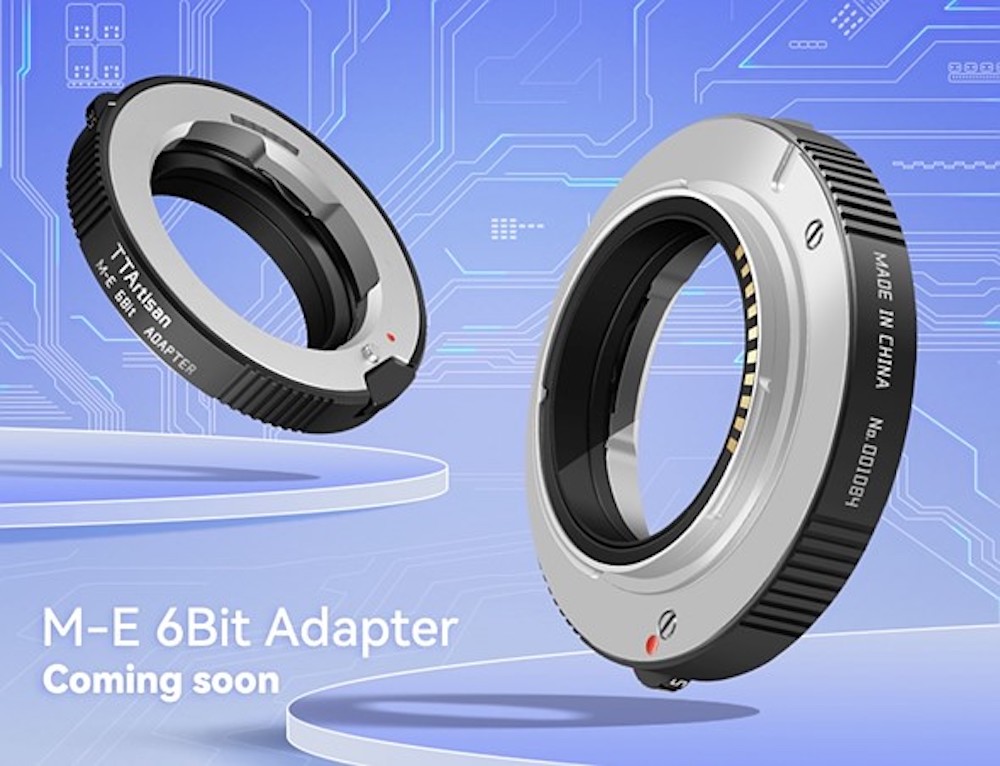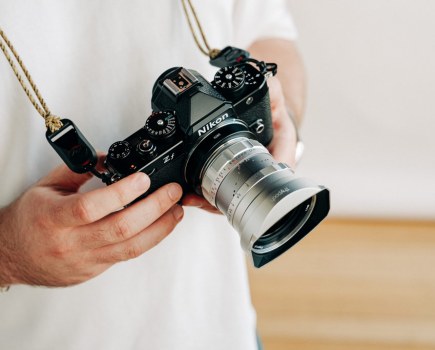TTArtisan has revealed its Leica to Sony M-E 6Bit Adapter, which includes a ‘track-wheel’ that helps to transmit focal length information to cameras for lenses with no electronic contacts.
The TTArtisan M-E 6Bit Adapter is said to support all modern and legacy M-mount lenses.
In addition to supporting data transmission with lenses that support Leica’s 6-bit electronic circuitry (Leica’s system for providing EXIF data to a camera), it has the additional ability to send pre-encoded focal lengths to a camera body to mimic the electronic communication.
News of the adapter first emerged on the Sony Alpha Rumors website and it has now been confirmed on TTArtisan’s website and the TTArtisan YouTube channel.

A close-up shot of the TTArtisan M-E 6Bit adapter
Leica’s M-mount lenses have electronic circuitry that tells the camera its lens information using a 6-bit code of ones and zeros. Depending on their exact arrangement, a camera with an optical 6-bit code reader can know what lens is attached.
If the attached Leica lens has 6-bit electronic circuitry to send its metadata to the camera body, the M-E 6-bit adapter simply supports that transmission.
Reading lens information
TTArtisan explained, ’When using the TTArtisan M-E 6-bit adapter ring, the lens and adapter ring must be connected first and then installed on the camera, so as to complete the process of reading lens information. What should be noted is that when we are adjusting the aperture of the manual lens, for example the aperture of the lens stops at 1.4, then the data of aperture in the camera should also be set to 1.4 manually, so that the aperture parameters can be memorised accurately. When changing the lens, turn off the camera first and remove the adapter ring together with the lens. If the lens on the camera is with a 6-bit function, such as a Leica 50mm, the focal length parameters can be recorded directly when taking photos with the TTArtisan M-E 6-bit adapter ring.’

The TTArtisan M-E 6Bit Adapter’s focal length track-wheel
Method for non-6-bit lenses
Because not all of the M-mount lenses support the 6-bit circuitry, the TTArtisan adapter has a separate method to allow lenses without 6-bit capabilities to still transmit EXIF data to the camera.
The M-E adapter includes what TTArtisan calls a ‘track-wheel’ – this can be turned to select a focal length, which it then communicates to the camera using pre-encoded metadata.
This is crucial, as Sony’s mirrorless cameras use in-body image stabilisation which is optimised for specific focal lengths.
If the camera body doesn’t ‘receive’ that focal length information, then the in-body stabilisation system simply won’t be as effective.
TTArtisan explained, ‘If the lens on the camera has no 6-bit function it is necessary to manually set the adapter ring to the same focal length as the lens. For example, with a 50mm TTArtisan lens you need to rotate the track-wheel on the adapter and stop the track-wheel at 50mm, and then it can be installed on the camera. In this way the focal length parameters can be recorded accurately when taking photos.’
Product video
TTArtisan has posted a product video on its YouTube channel, which explains the use of its M-E 6-bit adapter ring.
This short film includes an explanation of using the small focal length track-wheel, which appears to have focal length settings of 28mm, 35mm, 50mm, 90mm and 135mm.
You can watch the product video below…
Anti-shake function
The TTArtisan M-E 6-bit adapter ring supports the automatic anti-shake function, provided that the camera has the anti-shake function, such as the Sony A7R IV.
When using the TT Artisan M-E 6-bit adapter ring if the anti-shake function [SteadyShot] is on the anti-shake function setting on the camera will display [automatic]. If using an adapter ring without 6-bit the anti-shake function setting on the camera will display manual.’
Pricing & availability
As yet, TTArtisan hasn’t provided any additional information with regards to the price or availability of the adapter.
The Chinese company has merely stated the product is ‘Coming soon’ via its website.

TTArtisan has stated its M-E 6Bit Adapter is ‘Coming Soon’
To find out more go to the TTArtisan website.
Related articles:
Match makers: Lens mount adapters
Leica adds Summicron-M 28 f/2 ASPH. in Matte Black
Sony A7R IV: is it really that much better than the Sony A7R III?








